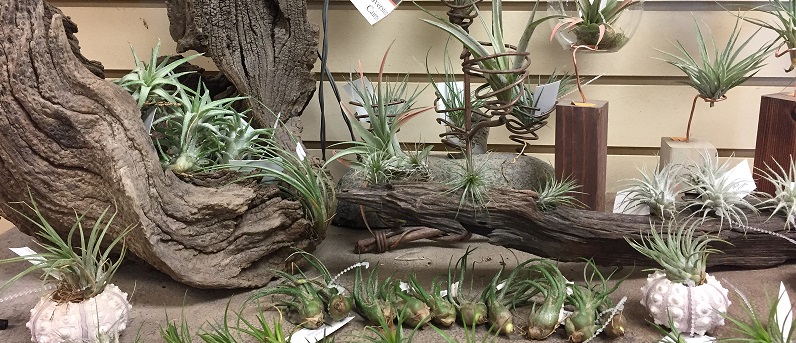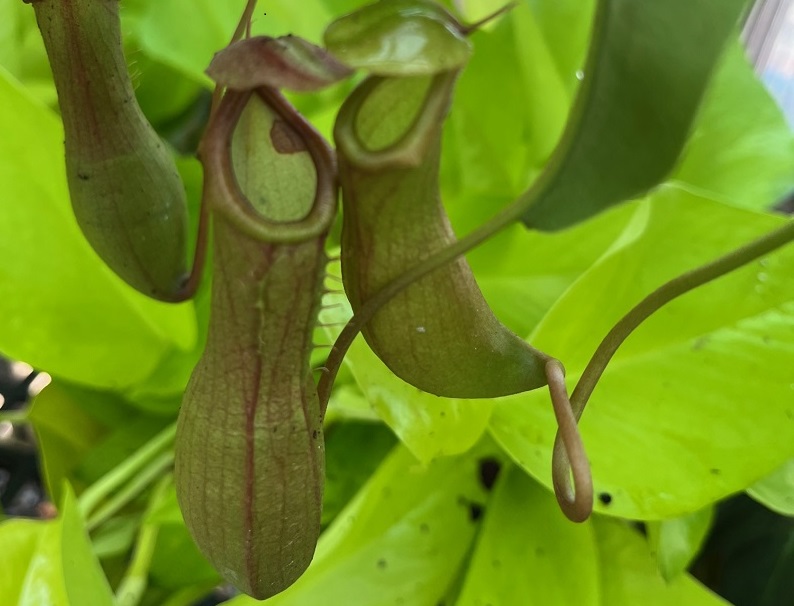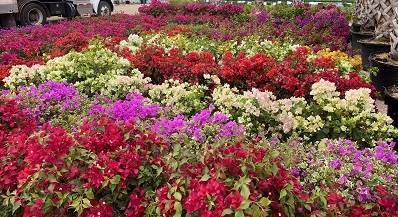Air Plant (Tillandsia) Care
Air plants, or Tillandsias, are Bromeliads in the pineapple family. They are classified as epiphytes, meaning they attach themselves to trees for support, taking nothing from and giving nothing to the tree. Their leaves, rather than their roots, absorb water and nutrients through tiny scales called trichomes. They really are quite easy to care for, but it helps to know what their requirements are if you want them to thrive.
Light: Lighting should be quite bright but not direct sun. Keeping them within 3’of an east, west or south facing window should give them the light they need. Trees, overhangs and tinted windows may affect the amount of light received, so adjust plants accordingly. Outside during the summer months, they may be kept in filtered light. Avoid direct sun on the plants. Artificial lighting will maintain the plants for a period of time, but they should be switched out periodically to bright, natural light. Keep the artificial lights on 12 hours a day if possible.
Watering: Tillandsias should be thoroughly wet about 2-3 times a week, and more often if in a hot, dry setting. Misting may be beneficial at maintaining a higher humidity, but should not be used as the sole source of watering. Softer, greener leaved plants may require more frequent watering than gray or silver leaved varieties.
Do not use distilled or softened water. Filtered tap water, allowed to stand long enough for chlorine to dissipate, or bottled water is fine. Better yet is rain water. When watering thoroughly, be sure to shake out any water that collects in leaf bases. The plant should dry completely within 3-4 hours, and never be in standing water.
Air circulation: Because tillandsias should be able to dry within 3-4 hours after watering, good air circulation is important. If in a terrarium, the top should be open, and the plant should never stand in water.
Temperature: While the ideal temperature for growing tillandsias would be in the 70’s, they will do well in temperatures between 50-80 degrees F.
Fertilizer: Fertilize your tillandsia twice a month with a soluble fertilizer specially made for tillandsias. You may also use a soluble fertilizer for houseplants at ¼ strength. Simply mist the foliage after watering.
Propagation: Most tillandsias will produce “offsets”, or baby plants, before, during and after blooming. You may separate the offsets when they are 1/3-1/2 the size of the mother plant. Hold both at the base and gently twist in a downward motion. You may also cut downward as close to the mother plant as possible. The offsets should mature in about a year. The mother plant may take several years after blooming to die, allowing her to produce more offsets. Some varieties must have the offsets removed before the mother plant dies, or they will die with the parent plant. For most, though, removing the dry leaves of the mother plant as it dies is acceptable, and the plants will fill in with time.
Flowers: Flowers last from a few days to a few months. Some are even fragrant!
Mounting: Tillandsias may be mounted on almost anything! Driftwood, cholla stems, coral, sea shells, sea urchins, lava rock, etc. If using glue, a non-water soluble glue such as E-6000 adhesive is best. Use galvanized florist wire or fishing line to hang or attach them to your mount.





Leave A Comment